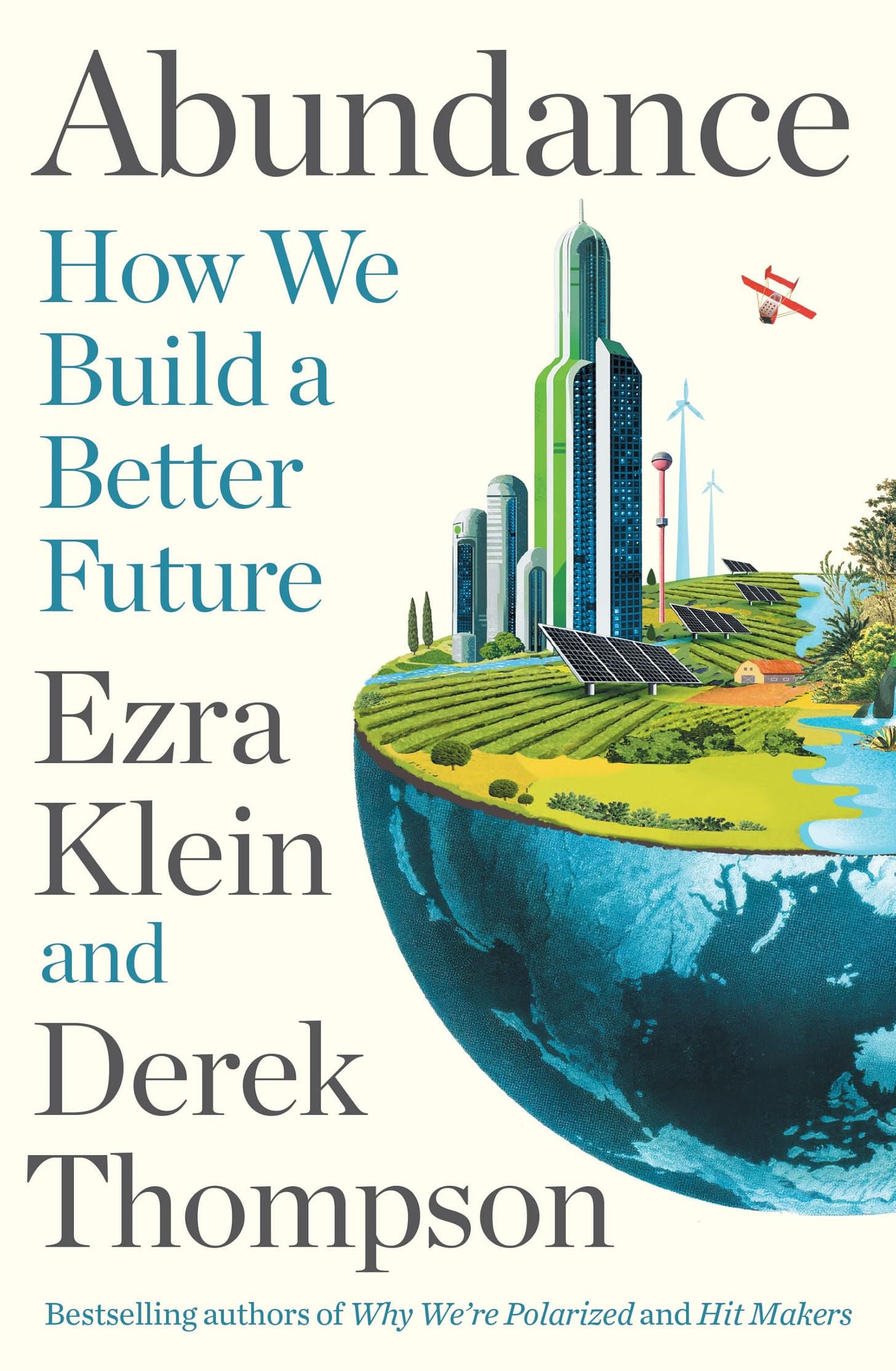What would an ‘Abundance’ Theory of Education involve?
The dawn of artificial intelligence is an opportunity to revisit the most fundamental questions about education. We should seize it.
In its interim report, published in March, the Curriculum and Assessment Review Panel, arguably the signature education policy initiative of the UK’s still relatively new Labour government, has the following to say about the most pressing issue in global education:
“[A]ttention is needed to address opportunities and challenges created by our fast-changing world. The rise of artificial intelligence (AI) and trends in digital information demand heightened media literacy and critical thinking, as well as digital skills. Likewise, global social and environmental challenges require attention to scientific and cultural knowledge and skills that can equip young people to meet the challenges of the future.”
As a way of framing the potentialities and threats promised by what may be a fundamental paradigm shift in learning and society, ‘attention is needed’ does not seem to meet the moment.
This is not a criticism—or, not exactly. The Curriculum Review is a serious and thorough piece of work by an admirably expert panel that sticks sensibly to its terms of reference. Those terms are not unambitious when considered against the backdrop of Britain’s stalled productivity, stubborn educational inequality and shredded public finances. Existentially, however, they are meagre.
British schools may benefit from the work of the Curriculum Review Panel—most likely they will—but they will not be fundamentally changed by it. The same cannot be said with confidence about artificial intelligence.
Is there a different way of casting the necessary debate about technology and education?
At the opposite end of the spectrum from government sponsored expert panels lies Abundance, a new book by Ezra Klein and Derek Thompson. The authors are both charter members of the liberal commentariat in the United States: Klein as a political commentator for The New York Times; Thompson as a staff writer for The Atlantic. Given the authors’ celebrity, it’s unsurprising that Abundance has attracted a level of attention typically reserved for reunion tours by dinosaur rockers.
Abundance is nothing if not a reflection on the existential. The book attempts to rescue the liberal state from its current crisis of output legitimacy by suggesting ways in which it can be reinvented through the application of technology. Its core argument is that technological change and political change exist in uneasy symbiosis. New technologies often disrupt how opportunity is distributed in society, augmenting the wealth, wellbeing and status of some, eroding that of others.
In the words of cultural critic Neil Postman, whose work is a significant influence on the authors of Abundance: “technology comes equipped with a program [ibid] for social change,” but this programme is not self-activating. Incumbents will use whatever political and economic power they have to steer technological change to their advantage or toward goals that better meet their definition of fairness.
The economy in the United States and in Great Britain is exceptionally good at producing consumer goods, but is much less effective at providing more fundamental ‘goods’ that increase people’s welfare—or “human flourishing”, as the authors write. Drawing on the work of political scientist Steven Teles and others, they call this ‘chosen scarcity’. Different choices are possible. That’s where Klein and Thompson see opportunity. They define the ‘Abundance Agenda’ as, fundamentally, a “program to harness [new] technology in service of social change … to produce an abundance of what’s needed to build a good life” (Loc 278, 351).
Their basic point is that, if progressives want technology to change society in a progressive direction—encouraging not only growth but redistribution, not only civil order but civic engagement—they need to plan for those outcomes rather than expect them to come as part of the operating system of their next iPhone or laptop. Optimists need an optimistic vision for the future.
The point is not that this argument is strikingly original. Politicians of all affiliations are turning to AI—sometimes enthusiastically, sometimes with a sense of resignation—as a potential solution to the inertia of the bureaucratic state. Nor is it that Klein and Thompson have a lot to say about education. They don’t. Strikingly little, in fact. Abundance is concerned with home building, with energy production, technological innovation and government bureaucracy – all, arguably, downstream from education.
The point is that the Abundance Agenda poses a central, genuinely ambitious question about public services that, when applied to education in the current moment, acquires particular urgency. That question is this: How can our education system be improved through technology so that it helps more people to live a good life?
Responding adequately to that question requires us to do something other than shower in the broken fire hydrant of speculation about the potential impact of artificial intelligence on schools and learning.
How can our education system be improved through technology so that it helps more people to live a good life?
Responding to that question requires agency; it requires us to decide, fundamentally, what we want from education, what learning technologies would best achieve those goals, and how to develop and deploy those technologies at the lowest cost and with the greatest positive impact.
If we want students to experience as well as to understand democracy through meaningful engagement in civic decision-making online, we need to ensure the tools to make that possible are available in every school. If we want greater personalisation of learning for students and teachers alike, we need to encourage innovation and resources in that direction. If we want digital learner passports that track additional needs and how these can better be met in real time from initial diagnosis to eventual graduation, that, too, should form part of our vision as educators and part of our ‘ask’ of technologists. If we want to liberate educators from burdensome forms of routine assessment, we need to ensure that learning technologies can assess students’ work without reinforcing the negative effects of standardised testing.
(The British government has taken steps in this direction by earmarking funding to build AI tools that will help with marking and assessment—though, at just £1mn spread over 16 developers, this is hardly a full throated commitment to system change.)
Answering the big question also requires us to decide what we don’t want. If we value unfiltered human contact—between students, between students and teachers, between students, teachers and parents—this needs to be designed into the learning technologies of the future rather than clawed back once the algorithm has led us down a different path. If we want the impact of technology on education to run counter to its impact on culture, differentiating rather than homogenising ‘content’, making the experience of variety more enticing rather than immersion in sameness, we need to learn from that earlier, unsatisfactory experience.
If we want technology to salve rather than to inflame the system alienation that has affected school attendance in the wake of Covid-19 pandemic, we need to consider carefully how it can close the psychological as well as the practical distance between present privation and future opportunity in the most alienated communities. If we want technology to narrow, rather than to widen, gaps in educational achievement that tightly track gaps in the material resources available to different social groups, we need that technology to be available at a cost low enough to be accessible to all—ideally, to be free to all at the point of use.
Formulating a vision for a renewed education system also requires us to see past the norms of the present. This can be challenging for education professionals and perhaps a little too easy for technologists.
People who have chosen to spend their working lives immersed in the structures and systems of formalised education often derive psychological comfort from those environments. This can mist over the critical lens through which we must examine the challenge facing modern education. Whatever ongoing value we find in schools, colleges and universities as institutions, they evolved to serve radically different systems of production, consumption and citizenship than those that prevail today. We cannot assume, as the Curriculum Review Panel appears to, that new learning technologies will leave those institutions essentially unchanged.
By contrast, technologists are often significant autodidacts who can undervalue the social dimension of learning and the importance of what might be termed curation in fields of understanding that cannot always be derived from first principles. This disposition can result in frustration when confronted with the messy realities of education policy and practice. It can also result in a yawning absence where a theory of change is required. We should assume neither the desirability of brick-and-mortar, in person, age-related schooling, nor the desirability of its dismantling.
A similar set of assumptions guides our attitudes toward government. There is no denying the public interest and therefore policy relevance of education, whatever one’s personal opinions on the effectiveness of specific institutions. The relationship between government at different levels and the education system sits on a spectrum from significant influence to substantial control, with the latter always in prospect.
Nonetheless, there is good reason for scepticism regarding government’s ability effectively to lead or to manage the transition to new learning models. The UK government is notoriously, but not uniquely, unskilled in the management of large-scale IT projects. The simple assumption that organisational hierarchies are incompatible with technological innovation has given way in recent years to distinguishing between innovation-friendly hierarchies and those that are innovation averse.
Unfortunately, governments, particularly central governments, tend towards the latter, being slow to change, hierarchical in decision making and, often, insensitive to feedback. These are not structural characteristics that will make responding to a paradigm shift easy—and this before we consider the myriad competing challenges facing the UK and other governments.
Governments play centrally important roles in funding technological innovation, in creating the sort of ecosystem necessary for technological innovation—not least through the cultivation of high-quality education systems—and in regulating the application of innovation. All of these will be fundamentally important in the coming phase. But engagement with other actors, closer to innovation itself, will also be essential.
I am not trying to endorse every aspect of Abundance. I agree with the historian Adam Tooze that elements of the Abundance argument feel like old wine in new, biodegradable boxes. (Though, in fairness to the authors, originality is not something they claim.) And there is no doubt that educators struggling to afford the basics may be reluctant to engage wholeheartedly with a thought exercise that may seem as relevant as debating the merits of Star Trek versus West World. Nor am I trying to exclude ongoing, serious discussion of more modest, incremental changes that technology will bring about in schools, colleges and universities.
But in its attempt to restore a sense of genuine possibility at a time when too much social change seems inevitable, oppressive and, yes, algorithmic, Abundance offers a welcome call to arms. “The difference between an economy that grows and an economy that stagnates is change ... The more growth there is, the more radically the future diverges from the past (Loc 215).” The same is true in education. Just how the system should change, I will explore in future posts.


